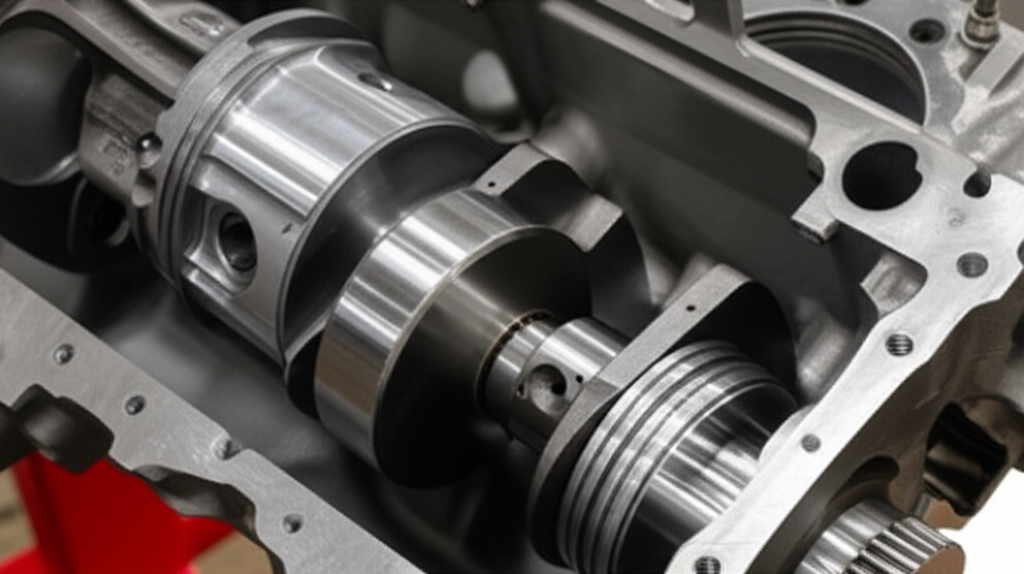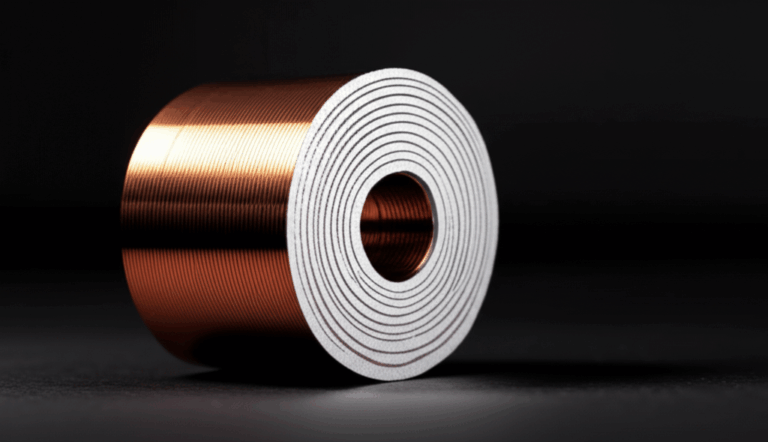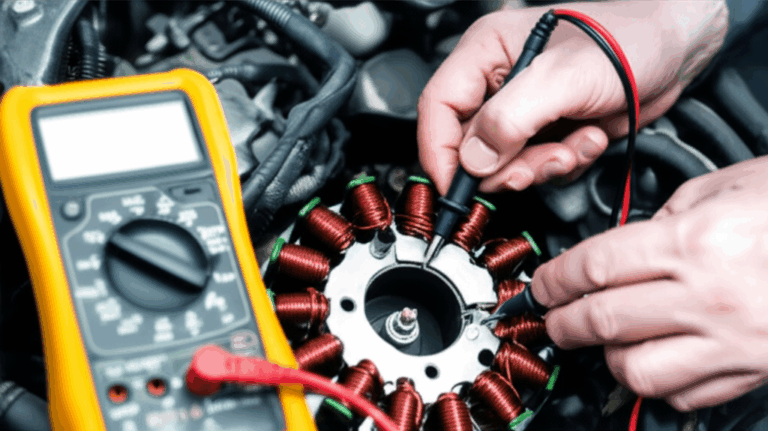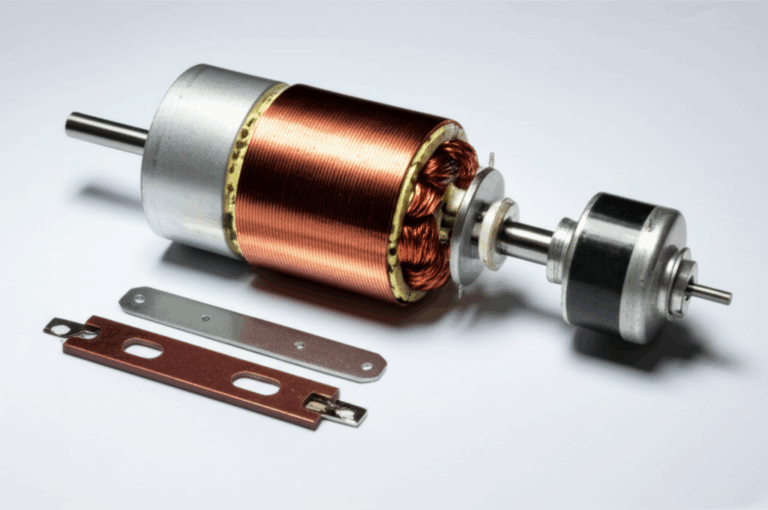
What Is a Stroker Motor? Your Guide to Enhanced Engine Performance
Table of Contents
- What Is a Stroker Motor? Your Guide to Enhanced Engine Performance
- How Do Bore and Stroke Work?
- How Does a Stroker Motor Make Power?
- What Comes in a Stroker Kit?
- What Are the Big Benefits?
- What Are the Risks and Trade‑offs?
- Which Stroker Builds Are Most Popular?
- How Do You Plan, Budget, and Balance a Build?
- How Do You Tune and Care for a Stroker?
- Is a Stroker Motor Right for Street, Track, or Towing?
- Stroker vs Supercharger vs Turbo: Which Path Fits You?
- Will a Stroker Pass Emissions and Stay Street Legal?
- Thinking About EV Power or Hybrids? Read This
- Real‑World Numbers: Power, Cost, and Builds
- References
- FAQ
- Key Takeaways
A stroker motor is a gas engine that uses a longer piston stroke than stock. That extra stroke boosts the engine’s internal volume. More volume means more air and fuel each cycle. More air and fuel means more torque and horsepower.
Why read this? You want easy power that feels strong off the line. You want clear steps with low fluff. In this guide I show you how stroker engines work, what parts matter, how to plan, and how to tune. I use simple words. I give you useful tables, tips, and notes from the shop.
Problem: Your car feels flat at low RPM. You push the gas yet it does not jump.
Agitate: You hate waiting for power. You want that pull in your back now. You want a simple path that keeps the look of your engine.
Solution: Build a stroker motor. You increase the stroke. You gain cubic inches. You get torque that wakes up the car without a blower.
How Do Bore and Stroke Work?
Let’s start at square one. Bore is the width of the hole in the engine block. Stroke is how far the piston moves from top to bottom. We call the top point TDC. We call the bottom point BDC.
Bore times stroke times the number of cylinders equals engine displacement. You see it in liters or cubic inches. When you increase stroke, you increase displacement. When you increase bore, you also increase displacement. Both change how the engine breathes, revs, and makes torque and horsepower.
A big bore helps flow at high RPM. A longer stroke helps torque in the low and mid range. For a street car you feel stroke right away. You get that push off idle. That is why stroker builds stay popular with street performance fans and hot rod owners.
How Does a Stroker Motor Make Power?
A stroker motor uses a crankshaft with more throw. The throw is the offset from the main centerline to the rod journal. More throw equals more stroke. More stroke means the connecting rods pull the pistons farther.
This change needs smart parts. You may use shorter rods. Or you use pistons with a lower compression height. You pick the right piston pin location so the piston does not hit the cylinder heads at TDC. You check piston to valve clearance. You check piston skirt clearancing. You may need cylinder block clearancing so the rods and crank do not touch the block. You check the oil pan clearancing too.
The crankshaft counterweights must pass clean. You confirm journal size crankshaft fits your main bearing journals and rod bearing journals. You choose internal vs external balance. You do a full engine balancing step so the engine runs smooth. You set the engine block deck height and may do deck plate honing for a tight seal.
What Comes in a Stroker Kit?
A good stroker kit gives you the core parts to change stroke the right way.
- Forged crankshaft with the longer stroke you want
- Forged connecting rods sized to match the crank and piston
- Forged pistons with the right piston compression height
- Performance bearings for mains and rods
- Rings, pins, locks, and often ARP fasteners
You can add a performance camshaft, better cylinder heads, a matched intake manifold, a tuned exhaust system, and a custom engine tune. Use brands you trust like Scat Crankshafts, Eagle Specialty Products, Callies Performance Products, Mahle Motorsports, Wiseco Pistons, JE Pistons, Comp Cams, Lunati, AFR (Airflow Research), Edelbrock, Holley Performance, K&N Engineering, Magnaflow, Borla, and ATI Performance Products. These companies support high performance engine builds with strong parts.
What Are the Big Benefits?
You get more than a bigger number on paper.
- Increase engine displacement by 10% to 30% or more
- Feel huge torque gains stroker motor in the low and mid range
- Add more horsepower stroker across the band in naturally aspirated power
- Keep your engine block so your classic stays numbers matching
- Build for drag racing engine classes that limit boost
You also get better drivability. A stroker pulls hard at low RPM. Your car moves with less throttle. It feels strong in traffic. It tows with ease. It climbs hills without a downshift. For a street performance engine this is gold.
What Are the Risks and Trade‑offs?
A stroker build is not free or easy. You need care.
- Cost: Parts and machine work add up. You pay for the best now or you pay later
- Increased complexity: You need tools, time, and skill
- Reliability & longevity: Poor builds fail fast. Good builds last
- Fuel efficiency stroker: MPG often drops by 1 to 5
- Heat: More load can raise engine heat stroker
- Vibes: Bad balance causes stroker motor vibration
- Clearance: You must check every fit to avoid knock and rub
- Emissions compliance stroker: Street rules may apply
Problem: You want big torque yet you fear poor life.
Agitate: A broken engine ruins your season. It drains your budget.
Solution: Use quality forged parts. Do clean measurements. Get pro engine balancing. Work with a reputable shop.
Which Stroker Builds Are Most Popular?
You will see these all the time at meets and on the dyno.
- Small Block Chevy (SBC) 383: Stock 350 to 383 with a 3.75″ stroke. Classic. Strong per dollar
- Ford Windsor engine 347: Stock 302 to 347 with a 3.40″ stroke. Fox bodies love it
- LS Engine 408/416/427/441: From 6.0L to 408 or 416. Or from 6.2L to 427 or even 441. Wild power in a tight space
- Hemi Engine: Big inch builds wake up these heads
- Big Block Chevy (BBC) 496/540/572: If you want brute force
Brands like Dart Machinery and World Products make strong blocks. Shops like Precision Race Engines and Blueprint Engines sell turn‑key stroker motor packages and complete stroker engine options. You also find a crate engine vs stroker debate in forums. Both work when you match parts to your goal.
How Do You Plan, Budget, and Balance a Build?
I like a simple plan. First, define the goal. Do you want a daily driver? A street car that hits the quarter mile times stroker crowd on weekends? Or a road trip car that must pass emissions compliance stroker?
Next, set the budget stroker build. A stroker kit can cost $1,500 to $4,000. A full build with machine shop work, heads, cam, and tune can land from $5,000 to $15,000 or more. Price varies by cast vs forged parts, by brand, and by platform.
Then, pick the stroke. Check journal size crankshaft. Check main bearing journals and rod bearing journals. Choose internal vs external balance. Use ATI Performance Products for dampers if the builder suggests it. Do a pro balance. The goal is smooth and strong. Poor balance hurts engine longevity stroker and can crack parts.
How Do You Tune and Care for a Stroker?
A stroker wants the right air, fuel, and spark. You can use a carburetor or EFI (Electronic Fuel Injection). With EFI you work with the ECU (Engine Control Unit). You use ecu tuning and an engine management system stroker. You watch a wideband O2 sensor stroker. You set fuel pressure stroker. You match injector size stroker to power. You dial ignition timing stroker. You listen to the knock sensor stroker if you have one.
Cooling and oiling matter too. Use an engine cooling stroker plan that matches your power. Upgrade your oil system stroker. Decide on dry sump stroker or wet sump stroker. Use the right pan for clearance. Use a good filter. Prime the system.
Follow a smart break‑in procedure stroker. Seat the rings. Change oil early. Keep logs. After that do engine maintenance stroker on time. You will enjoy a long life when you keep it simple and clean.
Is a Stroker Motor Right for Street, Track, or Towing?
For street use the extra torque feels great. You use less throttle to move the car. The 0‑60 mph stroker times improve. You merge with ease. You pass with less downshift. You grin.
For track days you get pull out of every corner. You match the camshaft selection stroker to your range. You work with cylinder head porting stroker when you chase peak power. You choose headers for stroker with a matched exhaust manifold stroker.
For trucks and off road you love the grunt. The engine holds strong at low RPM. It tows. It crawls.
You must match the rest of the car too. Pick a torque converter stroker that fits the torque curve. Pick a transmission for stroker that holds the power. Choose a differential for stroker and drivetrain upgrades stroker that do not break. Tune chassis tuning stroker and suspension for stroker. Upgrade braking system stroker. Match tire selection stroker and wheel choice stroker to the grip you need. Do engine bay clearancing stroker if space runs tight. Use the right engine mount stroker.
Stroker vs Supercharger vs Turbo: Which Path Fits You?
You can get power in three main ways on a gas engine.
- Stroker: You add stroke. You get torque at low RPM. You keep it simple. You avoid boost
- Supercharger: You add a blower. You get power now. You add heat and parts cost
- Turbo: You add a turbo. You get great top end. You add lag and heat
Problem: You want more power yet you want smooth drive and stock looks.
Agitate: Big blowers need space. Heat soaks parts. Belts slip.
Solution: A stroker gives you naturally aspirated power. It pulls hard from idle. It keeps the classic vibe. It also pairs well with mild boost when done right.
Will a Stroker Pass Emissions and Stay Street Legal?
Rules vary by state and country. A mild stroker with cats and a clean tune can pass in many places. A big cam hurts idle vacuum. That can affect tests. You can keep a street legal stroker if you plan. Keep emissions compliance stroker in mind from day one.
Use a good intake manifold stroker, a matched fuel injection system stroker or well‑tuned carburetor tuning stroker. Use quality cats from brands like Magnaflow or Borla. Keep ignition timing stroker safe. Make sure the ECU is happy with the sensors. When in doubt talk to a local shop.
Thinking About EV Power or Hybrids? Read This
Some builders look at EV swaps. They want instant torque. They want quiet. If you go that route the core of the electric motor matters a lot. It uses electrical steel laminations to control loss and heat. The quality of the electrical steel laminations sets the tone for motor efficiency and torque.
Inside an e‑motor you will find a stator and a rotor. The stack and shape of the sheets guide the magnetic path. If you want to learn more, study the role of stator core lamination and rotor core lamination. For EV builders and custom shops that need high quality stacks, it also helps to know how full motor core laminations get made and tested.
Do you need a stroker engine or an electric motor? It depends. I love the sound of a muscle car with a hot rod engine build. I also like the quiet surge of a BLDC motor with a well‑built bldc stator core. Pick the path that fits your project, your range, and your rules.
Real‑World Numbers: Power, Cost, and Builds
Here is a simple table with common ranges. Your results depend on heads, cam, intake, exhaust, and tune. Use a dyno (Dynamometer) to confirm the curve. Ask for a dyno sheet stroker motor from the builder.
| Feature or Metric | Typical Range | What It Means |
|---|---|---|
| Displacement gain | 10% to 30%+ | Example: SBC 350 to 383 or 400. Ford 302 to 331 or 347. LS 6.0L to 408 or 416 |
| Horsepower gains N/A | +50 to +150 HP | More with top parts and a custom tune |
| Torque gains N/A | +75 to +180+ lb‑ft | You feel this most in street use |
| Stroker kit cost | $1,500 to $4,000+ | Forged costs more yet lasts |
| Total build cost | $5,000 to $15,000+ | Includes machine work, assembly, heads, cam, and tune |
| Popular SBC build | 350 to 383 | 3.75″ stroke. Great power per dollar |
| Popular Ford build | 302 to 347 | 3.40″ stroke. Sharp in light cars |
| Popular LS builds | 6.0L to 408/416 | Big power with modern heads |
| Big Block Chevy | 454 to 496/540/572 | Brutal torque for heavy cars or boats |
| MPG impact | ‑1 to ‑5 mpg or more | Depends on tune and how you drive |
| Reliability | Very build dependent | Forged parts plus pro balance equal long life |
References
- SAE International. Fundamentals of reciprocating engines and performance
- Comp Cams. Cam selection guides and valve train tech
- Scat Crankshafts. Catalog and tech notes on stroke and balance
- Callies Performance Products. Crankshaft engineering
- AFR, Edelbrock, Holley Performance. Cylinder heads, intake, and EFI resources
- Mahle, Wiseco, JE Pistons. Piston compression height and ring sets
- ATI Performance Products. Harmonic damper selection and balance
- EPA and state DMV sites. Emissions rules for modified vehicles
- Shop notes from Precision Race Engines and Blueprint Engines on stroker setups
FAQ
Q: Does a stroker always rev less?
A: Not always. Stroke can raise mean piston speed at a set RPM. You can still rev high with the right rods, pistons, oiling, and balance. The cam and heads must support the flow you need.
Q: Will a stroker hurt daily driving?
A: Not when planned well. A mild cam, good tune, and strong cooling make it smooth. The extra torque helps in traffic.
Q: Do I need forged parts?
A: For big torque and hard use I pick forged parts. Cast can work on mild builds. Forged adds safety margin.
Q: Can I run boost on a stroker?
A: Yes. Many do. Keep compression and heat in check. Work with a builder who knows boosted strokers.
Q: How do I choose headers for stroker?
A: Match tube size and length to your displacement, cam, heads, and RPM range. Ask your header maker for a chart.
Key Takeaways
- A stroker motor lengthens stroke (engine) to raise engine displacement
- More inches equal more torque and horsepower, most of it in the low and mid range
- Match parts: crankshaft, connecting rods, pistons, bearings, camshaft, and cylinder heads
- Check every clearance: piston to valve, piston skirt, block clearancing, and oil pan clearancing
- Balance the build: choose internal vs external balance, use a pro engine balancing
- Plan the support parts: intake manifold stroker, fuel injection system stroker or carburetor tuning stroker, exhaust system stroker
- Tune with care: set ignition timing stroker, watch the wideband O2 sensor stroker, confirm on the dyno
- For street use, a stroker gives massive torque gains without boost
- Build the rest of the car to match: transmission for stroker, torque converter stroker, differential for stroker, drivetrain upgrades stroker, braking system stroker, suspension for stroker, chassis tuning stroker
- Keep rules in mind: street legal stroker needs smart parts and tune
- If you go electric, know how electrical steel laminations, stator, and rotor impact motor torque and heat. See electrical steel laminations, stator core lamination, rotor core lamination, and motor core laminations for deeper insight
Extra Build Notes and Tips
- Use deck plate honing for ring seal. It simulates head bolt load
- Check engine bay clearancing stroker when you add long headers for stroker
- Pick AFR, Edelbrock, or World Products heads that match your camshaft selection stroker
- A K&N Engineering filter and a tuned Holley Performance EFI can free flow
- Keep heat in check with a good radiator and fan. Heat kills engine longevity stroker
- If you road race, choose a dry sump stroker to avoid oil starve in long turns
- For drag racing, a wet sump stroker with a gated pan may be fine
- Save your dyno results stroker and compare after each change
- If you swap gears or tires, update your ECU or speedo to keep data real
- In old cars, upgrade wiring and grounds to keep sensors stable
Shopping and Support Checklist
- Choosing a stroker kit: match stroke, rod length, and compression height to your goal
- Best stroker kits: look for forged parts and full balance sheets
- Budget stroker build: spend on crank, rods, pistons, and machine work first
- Complete stroker engine: buy from a trusted shop if you want plug and play
- Turn‑key stroker motor: a simple way to hit power goals fast
- Crate engine vs stroker: crate is fast and warranty backed, a custom stroker is tailored
- Engine rebuild vs stroker: if you must rebuild, consider stroke for extra inches
- Check engine mount stroker, exhaust manifold stroker, headers for stroker, oil pan clearancing stroker
- Verify fuel efficiency stroker targets and be real about MPG drop
- Track 0‑60 mph stroker and quarter mile times stroker to see gains
- Confirm street performance engine goals match your cams, heads, and gearing
- For drag racing, follow class rules on inches and naturally aspirated power
With a good plan your stroker build will feel like magic. You touch the gas and the car moves. You hear a deep note. You get that grin again. That is why we build. That is why we drive.








